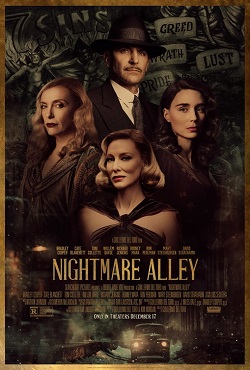Welcome to Late Night Retro Television Reviews, a new feature where we review some of our favorite and least favorite shows of the past! On Fridays, I will be reviewing Friday the 13th: The Series, a show which ran in syndication from 1987 to 1990. The show can be found on YouTube!
This week, season one comes to a close with a trip down nightmare lane.
Episode 1.26 “Bottle of Dreams”
(Dir by Mac Bradden, originally aired on July 25th, 1988)
It’s clip show time!
To be fair, the first season finale of Friday the 13th does come up with a clever way to justify being a clip show. Micki and Ryan get trapped in the vault of Curious Goods with an ancient, Egyptian urn that causes people to confront the memories of their worst fears. Not surprisingly all of Micki and Ryan’s worst fears are connected to the cursed antiques that they’ve spent the past year seeking out and dealing with.
So, once again, we get to see the cursed doll that started the series. We see the weirdo wandering around with his cursed cupid statue. We see the vampire. Oddly enough, we don’t see the pirate ghosts or the gangster who killed Micki’s boyfriend, even though both of those events were very traumatic for Micki. We don’t see the magic pipe that killed Ryan’s father, despite the fact that episode ended with Ryan in tears. We don’t see the newscaster who killed Ryan’s girlfriend or the cursed quilt that nearly caused Ryan to get burned at the stake. In short the clips seem to be a little bit arbitrary and they also all seem to come from early in the season, which leads me to suspect that this episode was put together long before it actually aired.
The cursed urn and the flashbacks are all a part of yet another attempt by Uncle Lewis (R.G. Armstrong) to return to the world of living. Fortunately, Jack’s friend Rashid (Elias Zarou) shows up and helps to push Lewis back into the netherworld. It’s always nice when one of Jack’s associates shows up to help. It creates the feeling that there’s an entire magical underground out there, all dealing with cursed antiques and malevolent spirits. While Ryan and Micki deal with their bad memories, Jack and Rashid are the ones who save the day and it makes for a nice conclusion for the first season. Our heroes may have started out as skeptical amateurs but now they’re a strong team. Micki and Ryan know that they can count on Jack, which is good considering that almost everyone else that that they get close to ends up dead.
The first season of Friday the 13th: The Series was pretty good. The horror was effective. The cast had a lot of chemistry. With a few exceptions, the cursed antiques were all interesting and worked in genuinely clever ways. The show had a sense of humor but it never let it get in the way of mayhem. Even the fact that the show claimed to be set in America even though it was clearly filmed in Canada and filled with Canadian actors only served to increase the dream-like atmosphere.
Will the second season live up to the first? We’ll start to find out next week!








